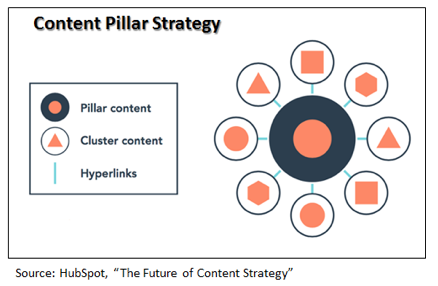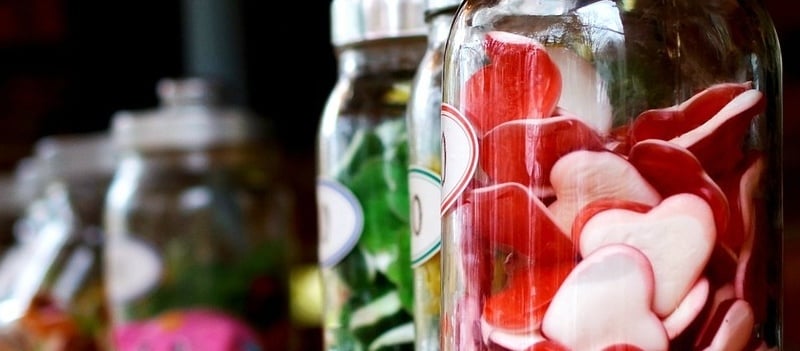A dash of this, a pinch of that and pretty soon your firm will be cooking up new leads!
 The other day I walked into the test kitchens of the Lead Gen Society of America to see what they’ve been cooking up.
The other day I walked into the test kitchens of the Lead Gen Society of America to see what they’ve been cooking up.
Amidst the hustle and bustle of offers being debated, call to action buttons getting created, and lead gen campaignsbeing automated came an intoxicating smell. I was compelled to investigate.
There, suspended over a blazing open fire right smack dab in the middle of all of the organized chaos was a cauldron bubbling merrily away. Mesmerized, I drew closer and closer and when I peaked inside (even though I was getting dizzy from the delicious smell), I saw a rich stew of new business initiatives with TOFUs, MOFUs and BOFUs swirling around and around. And with each burst and plop of this concoction bubbling to the surface and then exploding skyward came the sound of a ringing bell.
“Each bell is the sound of a new client signing an engagement letter,” I was told. “Kinda like a cash register ringing!”
Wow. There’s nothing quite like the smell of new leads boiling merrily away and the sounds of new clients being acquired.
Let’s Cook Up Some Leads and New Business
Are you ready to start cooking up some online leads?
Cool. Grab a HUGE pot (after all we’re going to be making hundreds and hundreds of leads), turn on the thought leadership burners, and let’s start adding ingredients:
 Step 1: Add a quart of pain
Step 1: Add a quart of pain
Lead generation campaigns need to be built on a pain point or issue faced by your prospects like recent law or regulatory change requiring compliance; business, financial, or operational “thorns” that are impacting top or bottom line performance; or micro or macro economic trends that are keeping prospects or clients up at night.
Step 2: Add 3 heaping tablespoons of offers
Our recipe will need three types of offers each keyed to different parts of the buying process: TOFU, or top of the funnel offers designed to deliver education and awareness; MOFU or middle of the funnel offers designed to tie the education process to your firm’s qualifications; and BOFU, or bottom of the funnel offers designed as one of the last steps for converting a lead into a client.
 Step 3: Quickly stir in the device
Step 3: Quickly stir in the device
Offers need to be packaged into a device, like a white paper, seminar, eBook, report, etc. Each type of device you might consider comes with its own unique set of logistical requirements (i.e. where do I get the content and who’s going to write the white paper?), and each will have indirect/resource and possibly direct costs. Also, different types of offers (TOFU, MOFU, BOFU) will probably mean you will need to use different types of devices
Step 4: Add 4,268 teaspoons of database records - or whatever you have in your cupboard
Lead generation involves both on-website and off-website promotion (outbound) to reach eyeballs for conversion to leads. A critical and challenging part of lead gen success is having a large and accurate database of prospects, with e-mail addresses, that represent opportunities to promote your offer and device.
Step 5: Add dashes of Call-to-Action Buttons to taste
A call to action, or CTA, is a banner, button, or some type of graphic or text on a website meant to prompt a user to click it and continue down a conversion funnel. It is an essential part of inbound marketing as well as permission marketing in that it actively strives to convert a user into a lead and later into a customer.
Step 6: Fold in landing pages
Lead gen efforts need infrastructure for lead acquisition and capture. This is done through constructing a landing page in the background of your website where you can capture an eyeball’s contact information and start the process of generating lead tracking and conversion metrics. One of the best tools to accommodate this is a software program called HubSpot.
Step 7: Shake in Off-site promotions and stir vigorously
There are a variety of paid and non-paid media tactics you’ll want to consider and integrate into your campaign. These include paid e-advertising like LinkedIn and Google Adwords, or banner adverting; and non-paid tactics like promotion of your offer through your social media accounts or your e-newsletter. However, the centerpiece of off-site promotion seasonings should be e-mail – it’s relatively inexpensive and produces the first set of metrics you’ll want to employ for measuring ROI.
 Step 8: Sprinkle a touch or two of lead nurturing and automation into the pot
Step 8: Sprinkle a touch or two of lead nurturing and automation into the pot
It’s likely that most leads you acquire through your online campaigns will not be sales ready, so you’ll want to include a lead nurturing strategy as part of the campaign planning process. You may need 3 or more “touches” before a lead is sales ready, and with the marketing technology that’s available today, this process can be automated and virtually hands-free.
Step 9: Liberally add marketing technology and bring things to a boil
You’ll want to use marketing technology, like HubSpot’s all-in-one software that can help with the creation of CTA buttons, landing pages, email, automating the lead nurturing process, producing data for analyzing results, and more. Firms are also turning to CRM products like SalesForce and Microsoft Dynamics to help with implementing and keeping track of prospect interactions.
Hey!! Quit Taking the Cover Off of the Pot ... Your Masterpiece Isn’t Quite Ready Yet!!!
I hope that you didn’t forget one of the most critical ingredients in the masterpiece you’ve created – coordinating with your rainmaker or business development person who will call on leads and take your “diners” from a prospect to a sales qualified lead and ultimately to a new client.
It’s only when they’re in the mix that your masterpiece will be done.
Truth be told, there’s not a lot of CPA and professional services firms that are cooking up leads with online lead generation. They prefer the agonizingly slow route of word of mouth marketing for their new business opportunities. But then there are others doing online lead gen who are seeing amazing results. (Check this case study out here).
Maybe it’s time to break out your apron and chef’s hat. But it seems as if a lot of firms can’t stand the heat, and as Harry once said, get out of the kitchen. The only problem is that those delicious smells of new leads being acquired and prospects being converted into clients may be coming from your competitors.
Did you just hear a bell ring?
.png)








Leave a Comment